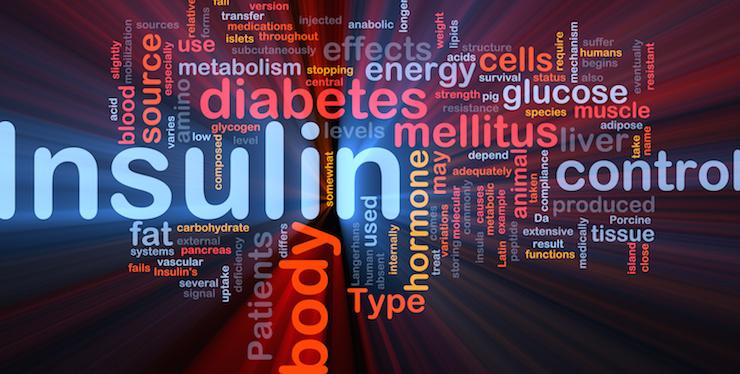
- Health advice
- Jun 15, 2017
Type 2 Diabetes Mellitus (T2DM) involves a vicious cycle of metabolic damage
- long term inflammation which causes obesity as well as T2DM, and then obesity which is a significant contributor to inflammation. In this article we’re going to review the relationship between body weight and Type 2 Diabetes. Why do some obese people never develop T2DM, yet some slim people do? Even more peculiar, recent research suggests that obesity may actually protect some people from developing T2DM.
How obesity causes Type 2 Diabetes
Fat is not an inert substance, it releases inflammatory hormones that have a significant effect on your body. Recent research shows that T2DM is also characterized by your body’s inability to break down not only glucose, but fat as well, playing a role in the development of Type 2 Diabetes.
What happens when you gain weight
When weight gain occurs, your body is called upon to release more Leptin - the hormone that tells your brain to decrease appetite, increase metabolic rate and increase physical activity. If too much Leptin is circulating in your body over a long period of time, a resistance is developed to it. Leptin resistance causes fats to spill over into tissues other than fat cells, such as the liver, pancreas and heart. This is dangerous, causing inflammation and toxicity - fat does not belong in these tissues! Obesity also causes fat cells to increase in number and size; these can rupture, releasing their fat content and causing further inflammation as your body attempts to clean up the mess. This “lipotoxicity” and inflammation creates Insulin Resistance, the defining feature of Type 2 Diabetes and Metabolic Syndrome.
Not all obese people get diabetes
There are some obese people who are “metabolically healthy”, which means that their fasting glucose, triglycerides, and other metabolic markers are normal. These people number roughly 6% of the population, and are at no higher risk for Type 2 Diabetes or Cardiovascular Disease (CVD) than their metabolically healthy lean counterparts.
Two main fat storage areas
The reason for this is that not all obesity is the same; there are two main areas where you store fat: under the skin (subcutaneous) and in the abdominal cavity (abdominal or visceral – also known as a “beer belly”). Visceral fat is a main factor in predicting whether Type 2 Diabetes or Metabolic Syndrome may develop.
Obesity may save your life
Obesity is a healthy response to an extremely toxic condition - high blood sugar. The conversion of glucose to fat is your body’s attempt to protect your liver, brain and other vital organs from glucose poisoning. But this only works for so long, and eventually fat cells can’t accommodate any more glucose, and metabolic dysfunction sets in. Subcutaneous fat due to its large surface area can store far more glucose as fat, which is why it is more protective against Metabolic Syndrome, and why men, with a smaller amount of subcutaneous fat than women, tend to more easily develop “beer gut”.
Visceral Fat the most dangerous kind
Visceral fat stores less fat than subcutaneous fat, and is highly active from a metabolic point of view, also a large producer of inflammatory cells. Visceral fat cells are also subject to sudden pressure variations (cough, physical exercise, etc.) that cause them to rupture more easily than subcutaneous fat cells, causing inflammation. If you have a lot of visceral fat, you’re at much higher risk for T2DM and Cardiovascular Disease even with a low BMI (Body Mass Index). Although nearly 1 in 3 Americans are obese today, it hasn’t always been this way. Obesity has become common only in the last 40 years in the U.S., and was virtually unheard of in traditional hunter-gatherer societies. Leanness is the natural human state, and obesity is a sign that something has gone wrong. Australia is not far behind the US in the obese stakes!
Check out the whole Diabesity story and catch up on each instalment below
See also Part 1 of our series The Modern Day Health Epidemic that you should know about
See also Part 2 of our series Diabesity: Myths that keep you sick
See also Part 3 of our series Diabesity and Inflammation
See also Part 4 of our series Diabesity: How come I’ve got Type 2 Diabetes? I’m not fat!!!
See also Part 5 of our series Diabesity: Not all Diabetics are Obese
See also Part 6 of our series Diabesity: How modern lifestyles affects your metabolism
See also Part 7 of our series Diabesity: The major triggers – What you need to know See also Part 8 of our series Ten ways stress can cause Diabesity
See also Part 9 of our series Diabesity: A magic ingredient for weight loss? – A healthy gut
See also Part 10 of our series Diabesity: Toxic Overload
See also Part 11 of our series Diabesity: Normal Blood Sugar
See also Part 12 Part 1 of our series Diabesity: It's all about prevention Part 1
See also Part 13 Part 2 of our series Diabesity: It's all about prevention Part 2






